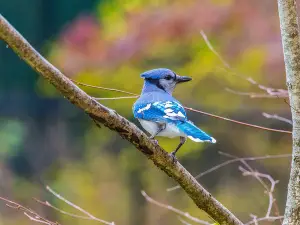
If you’ve ever enjoyed stock, aspic, consommé, candies and many types of desserts then you’ve probably ingested gelatin. This food substance is made by boiling animal collagen. It is odourless, almost colourless and almost tasteless, because of this, it is very versatile and thus used a lot. If you own birds then you may be wondering if feeding your bird this food is good for it or not. This article gives the answer to the question of whether ‘can birds eat gelatin’
Yes, birds can eat gelatin, this versatile food can safely be given to birds. The amino acids, arginine, lysine and alanine in this food will be beneficial to the bird’s body. You can prepare gelatin for birds by adding it to your bird’s seed cakes.
Table of Contents
Can birds eat gelatin?
Gelatin is a protein that contains a number of unique amino acids. The most common amino acids in gelatin include proline, valine and glycine. Certain forms of gelatin also contain arginine, lysine and alanine. Amino acids are building blocks of proteins, both birds and animals need amino acids for the healthy functioning of the body. The amino acids are what help build proteins in the body as well as synthesise hormones.
The answer is yes! Birds can eat and do benefit from the benefits that gelatin offers. Giving your birds gelatin, or preparing it in a bird food like a seed block, can deliver the amino acids into the bird’s body. You can sneak it into their diets in a number of ways but one easy way to feed your feathered friends this food is by using it to make seed cakes
How to prepare gelatin for birds
You can prepare gelatin for your feathered friends by creating seed cakes for the birds and using gelatin as a binding agent. To do this follow these steps:
- Start off by combining corn syrup, water, flour and gelatin in a large bowl. Tip: To ensure that the gelatin sets quickly use ice-cold water in your recipe
- Once the above is mixed slowly add the birdseed little by little, add more seed until the mixture is thick enough to work with
- Spread the mixture onto a layer of wax paper until it is the same thickness as your chosen cookie cutters
- Cut out different shapes using your cookie cutters, if needed, remove any excess mixture from around your cookie cutter
- Repeat step 4 until you are out of the mixture
- While the seed cakes are still workable, create a hole in the top using a drinking straw, this is where you’ll be threading your string
- Allow the cakes to dry for at least 8 hours to harden on one side
- Flip the cakes over and let them dry for another 8 hours.
- Once the cakes are dry loop a string in the holes and hang the seed cakes out in your yard
Tip: You can also add fruit pieces and nuts to the mixture
Tip: Ensure you don’t add too much gelatin or else the birds won’t be attracted to the seed cakes
Can birds eat unflavoured gelatin?
Yes, birds can eat unflavored gelatin, in fact, unflavored gelatin is better for birds. Flavoured gelatin usually doesn’t contain much gelatin in the pack, the rest of the pack will contain sugar, tartan, stabilize and artificial colourants, these are all bad for birds. Birds may enjoy the sweetness of sugar but too much can give the bird serious health problems. In addition, the other additives contained in flavoured gelatin are not natural to any birds natural diet, they can negatively affect the health of the bird. If you’re serving birds gelatin ensure that it is the unflavored kind.
How do you make bird feeders without gelatin?
If you don’t have any gelatin available, to act as a binding agent in your seed cakes, you can rather use lard. Lard is a great substitute for gelatin as it sets well, is cheap, is easy to melt in the microwave and birds enjoy it. Other alternatives to using gelatin include corn syrup and flour, or even peanut butter, which the birds will surely enjoy very much.
Conclusion:
In conclusion, yes, birds can eat gelatin. This product offers birds a variety of amino acids and can easily be incorporated into seed cakes. When feeding your birds gelatin make sure that it is unflavored, flavoured gelatin has many additives that are not only bad for humans but bad for birds as well. As a substitute, you can use peanut butter, lard, corn syrup or flour in the seed cakes.
If you enjoyed this article then you may also be interested in other bird related articles. Here are some articles that you may be interested in: Can birds eat garlic?, Can birds eat honey?, Can birds eat ham?, Can birds eat hard-boiled eggs?

